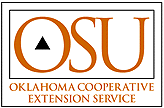|
||||||||||||||||||||||||||||||||||||||||||||||||||||||||||||||||||||||||||||||||||||||||||||||||||
|
|
||||||||||||||||||||||||||||||||||||||||||||||||||||||||||||||||||||||||||||||||||||||||||||||||||
| PT 2005-12 |
VOL.17 |
July 2005 |
||||||||||||||||||||||||||||||||||||||||||||||||||||||||||||||||||||||||||||||||||||||||||||||||
|
|
||||||||||||||||||||||||||||||||||||||||||||||||||||||||||||||||||||||||||||||||||||||||||||||||||
|
ALFALFA VARIETIES FOR OKLAHOMA - 2005 |
||||||||||||||||||||||||||||||||||||||||||||||||||||||||||||||||||||||||||||||||||||||||||||||||||
|
John Caddel |
Jay Prater |
|||||||||||||||||||||||||||||||||||||||||||||||||||||||||||||||||||||||||||||||||||||||||||||||||
|
The alfalfa variety evaluation program within the Plant & Soil Sciences Dept. at OSU tests the performance of alfalfa varieties that may be marketed in the state. Our purpose is to help alfalfa producers decide which varieties to consider and to assist marketers to choose varieties for this area. Normally 10 to 20 new alfalfas are submitted annually for testing in Oklahoma. We also include in these tests some varieties that are well tested to give a sound basis of comparison among varieties. The table below summarizes facts about the best varieties in current tests. Those wanting detailed information about alfalfa variety performance should visit http://alfalfa.okstate.edu/var-test/alf-var.html on the Internet. Currently, detailed results for the 1999-2004 harvest years in Oklahoma are available and can be printed from that site. If anyone desires older data, email the authors at john.caddel@okstate.edu Varieties listed in Table 1 are well-tested and have had consistently good yields. That is, they have been in several tests, representing diverse alfalfa production areas in the state. Test-years is the sum of the number of years a variety has been in tests. In general 10 test-years is a minimum to have confidence of a variety's yield potential. Relative Yield is a relative ranking of a variety's yield, compared to others in a test. A Relative Yield score of 100% indicates a variety's yield performance is average among those in a test. Table 1 also gives the year a variety was released and who markets the variety in Oklahoma. Alfalfa varieties are marketed in Oklahoma that are not submitted for testing. They may be good or poor. Without testing we do not know.
|
||||||||||||||||||||||||||||||||||||||||||||||||||||||||||||||||||||||||||||||||||||||||||||||||||

